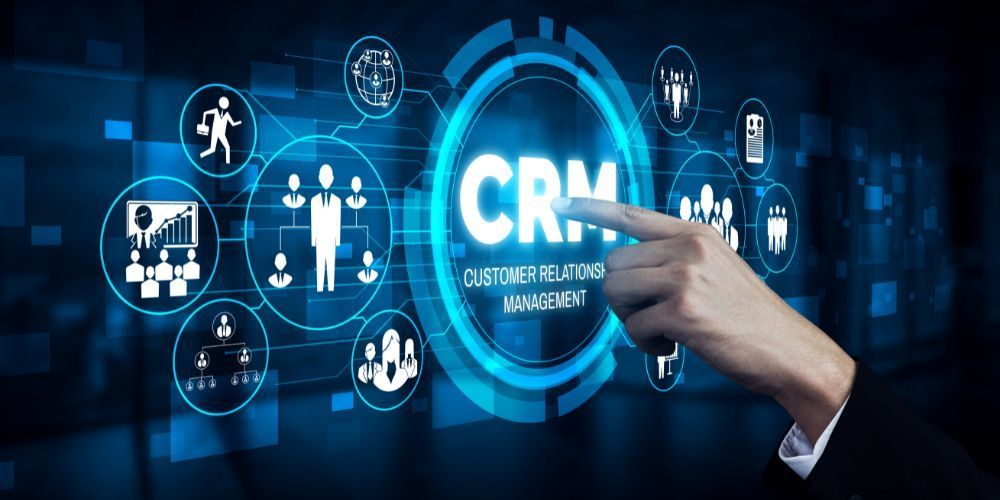The Complete MarTech Ecosystem: Strategic Tools for Digital Transformation
In today's digital-first business environment, Marketing Technology—or MarTech—represents the backbone of successful customer engagement strategies. For executives and decision-makers navigating this complex landscape, understanding the full spectrum of available tools isn't just advantageous—it's essential for maintaining competitive edge.
This comprehensive guide breaks down the MarTech ecosystem into its critical components, offering strategic insights on how each category serves specific business objectives while integrating into a cohesive technology stack. As digital transformation accelerates across industries, these tools represent not just operational assets but strategic investments that drive measurable business outcomes.

Customer Data & Management
At the foundation of any effective marketing strategy lies robust customer data management. These systems enable organizations to collect, unify, and activate customer data across touchpoints, creating the single source of truth essential for personalized engagement at scale.
- Customer Relationship Management (CRM) systems: The central repository for customer interactions and relationship history. Examples include Salesforce, HubSpot CRM, and Microsoft Dynamics 365, which serve as the system of record for sales activities and customer communications.
- Customer Data Platforms (CDPs): Unify identified customer data from multiple sources to create comprehensive customer profiles accessible to other systems. Platforms like Segment, Tealium, and Adobe Real-Time CDP enable marketers to create persistent, unified customer databases that drive personalization initiatives.
- Data Management Platforms (DMPs): Focus primarily on anonymous audience data and third-party data management for advertising purposes. Examples include Adobe Audience Manager and Oracle DMP, which help organizations manage cookie IDs and device identifiers to target anonymous segments.
- Master Data Management (MDM) solutions: Ensure consistency of critical data assets across the enterprise. Solutions like Informatica MDM and IBM InfoSphere Master Data Management create authoritative sources for business-critical information beyond just customer data.
- Identity Resolution platforms: Connect identifiers across devices and channels to create a unified customer view. Technologies like LiveRamp and Neustar help organizations resolve fragmented customer identities into cohesive profiles.
- Customer Identity & Access Management (CIAM): Manage customer identity, authentication, and access across digital properties. Platforms like Okta, Auth0, and ForgeRock enable secure and frictionless customer experiences across touchpoints.
- Voice of Customer (VoC) solutions: Capture and analyze customer feedback across channels. Tools like Qualtrics, Medallia, and InMoment help organizations systematically collect and act on customer sentiment and preferences.
Customer data management systems form the cornerstone of data-driven marketing. Without robust data infrastructure, enterprises struggle to deliver the personalized experiences customers now expect. As privacy regulations like GDPR and CCPA reshape data practices, these systems also provide the governance frameworks necessary for compliant customer data activation.
Marketing Automation & Campaign Management
Marketing automation empowers teams to scale personalized communications across channels while optimizing resource allocation. These platforms transform marketing execution from manual, labor-intensive processes to strategic, data-driven programs.
- Marketing Automation Platforms (MAPs): Automate repetitive marketing tasks and nurture prospects through the buyer's journey. Platforms like Marketo, HubSpot, and Eloqua enable the orchestration of multi-channel campaigns based on customer behavior and demographics.
- Email Marketing Systems: Deploy and measure email campaigns with segmentation capabilities. Solutions like Mailchimp, Campaign Monitor, and Klaviyo provide sophisticated email marketing with analytics and personalization features.
- Mobile Marketing Platforms: Enable push notifications, in-app messaging, and mobile-specific engagement. Platforms like Braze, Airship, and Iterable help marketers create cohesive mobile experiences integrated with other channels.
- Cross-channel Campaign Management tools: Coordinate consistent messaging across multiple marketing channels. Adobe Campaign, Salesforce Marketing Cloud, and Acoustic Campaign offer centralized campaign management across email, mobile, social, and web.
- Customer Journey Orchestration platforms: Design and automate customer experiences across touchpoints based on behavior. Tools like Kitewheel, Thunderhead, and Autopilot help marketers create responsive customer journeys that adapt to real-time signals.
- Account-Based Marketing (ABM) platforms: Target and engage high-value accounts with personalized campaigns. Demandbase, Terminus, and 6sense enable marketing and sales alignment around target account strategies.
- Social Media Management tools: Schedule, publish, and analyze social media content across platforms. Hootsuite, Sprout Social, and Buffer streamline social media operations while providing performance analytics.
Marketing automation drives operational efficiency while improving marketing effectiveness. By reducing manual processes and deploying AI-driven decision making, these tools enable marketing teams to scale personalized engagement without proportionally increasing headcount. As customer journeys grow more complex, these systems provide the orchestration layer necessary to deliver consistent, relevant experiences across channels.
Content & Experience
Content and experience platforms enable organizations to create, manage, and optimize the digital experiences that define customer perception. These systems help transform raw content into compelling customer experiences across channels.
- Content Management Systems (CMS): Create, edit, and publish digital content for websites and applications. WordPress, Drupal, and Adobe Experience Manager provide the infrastructure to manage website content at scale.
- Digital Asset Management (DAM): Store, organize, and distribute digital assets like images, videos, and documents. Solutions like Bynder, Widen, and Canto centralize digital assets and streamline content production workflows.
- Content Experience Platforms: Curate and personalize content for specific audiences and channels. Uberflip, Pathfactory, and Contentstack help organizations deliver tailored content experiences based on audience segments and behavior.
- Web Experience Management systems: Create and optimize comprehensive web experiences beyond just content. Adobe Experience Manager, Sitecore, and Optimizely provide tools for managing personalized web experiences across customer lifecycle stages.
- Personalization engines: Deliver individualized content, offers, and experiences based on user data. Dynamic Yield, Evergage (now Salesforce Interaction Studio), and Monetate enable real-time personalization across digital touchpoints.
- A/B Testing & Optimization tools: Test variations of digital experiences to identify highest-performing options. Optimizely, VWO, and Adobe Target enable organizations to continuously improve digital experiences through experimentation.
- Headless CMS solutions: Separate content creation from presentation layer for omnichannel delivery. Contentful, Prismic, and Strapi provide flexible content infrastructure for delivering experiences across websites, mobile apps, IoT devices, and emerging channels.
Effective content and experience management has become a critical differentiator as digital interactions represent an increasing proportion of the customer relationship. These systems enable organizations to scale content production while ensuring consistent quality and relevance across channels. As customers expect increasingly personalized experiences, these platforms provide the technical foundation for delivering the right content to the right person at the right time.
Advertising & Promotion
Advertising technology enables organizations to efficiently reach prospects and customers through paid media channels. These platforms provide the infrastructure to plan, execute, and optimize advertising campaigns at scale.
- Programmatic Advertising platforms: Automate buying and selling of digital ad inventory. The Trade Desk, MediaMath, and Google Display & Video 360 enable real-time bidding and placement of ads across the digital ecosystem.
- Ad Servers: Deliver, track, and manage digital advertisements across websites. Google Ad Manager, Flashtalking, and Sizmek serve ads and provide reporting on campaign performance.
- Demand-Side Platforms (DSPs): Purchase digital ad inventory across multiple sources through automated systems. Amazon DSP, Adobe Advertising Cloud, and Xandr provide access to ad exchanges and private marketplaces.
- Search Engine Marketing (SEM) tools: Manage paid search campaigns across search engines. Google Ads, Microsoft Advertising, and Kenshoo streamline search marketing campaign management and optimization.
- Display & Programmatic Advertising solutions: Target banner, video, and rich media ads to specific audiences. StackAdapt, Basis by Centro, and Simpli.fi provide platforms for targeted display advertising integrated with programmatic capabilities.
- Social Advertising platforms: Create and manage paid campaigns across social networks. Facebook Ads Manager, LinkedIn Campaign Manager, and TikTok for Business enable targeted advertising on social platforms where audiences spend significant time.
- Affiliate Marketing platforms: Manage partnerships with publishers who promote products for commission. Impact, Partnerize, and AWIN provide infrastructure to scale partner marketing programs with tracking and payment capabilities.
Advertising technology has evolved from manual media buying to sophisticated, data-driven targeting that maximizes return on ad spend. These systems enable precise audience targeting while providing the measurement frameworks necessary to demonstrate marketing ROI. As digital advertising grows increasingly complex, these platforms provide the automation and intelligence required to compete effectively in crowded marketplaces.
Analytics & Intelligence
Analytics and intelligence tools transform raw data into actionable insights that drive strategic decision-making. These systems help organizations understand marketing performance, customer behavior, and emerging opportunities.
- Marketing Analytics platforms: Measure and visualize marketing performance across channels and campaigns. Google Analytics, Adobe Analytics, and Mixpanel provide insights into digital behavior and marketing effectiveness.
- Attribution solutions: Assign credit to marketing touchpoints that influence conversions. Neustar MarketShare, Nielsen Attribution, and Measured help organizations understand which marketing activities drive business results.
- Business Intelligence tools: Transform data into interactive dashboards and reports for decision-making. Tableau, Power BI, and Looker enable organizations to visualize marketing data alongside other business metrics.
- Predictive Analytics systems: Forecast outcomes and identify patterns based on historical data. Alteryx, RapidMiner, and DataRobot help marketing teams predict customer behavior and anticipate market trends.
- AI/ML Marketing platforms: Apply artificial intelligence to optimize marketing decisions and personalization. Albert, Persado, and Pattern89 automate complex marketing tasks using machine learning algorithms.
- Customer Analytics solutions: Analyze customer behavior across touchpoints to identify insights and opportunities. Amplitude, Heap, and Hotjar provide detailed visibility into how customers interact with digital properties.
- Competitive Intelligence tools: Monitor and analyze competitor activities and market positioning. Crayon, Klue, and Kompyte help organizations track competitive movements and identify strategic opportunities.
Analytics capabilities have evolved from retrospective reporting to predictive and prescriptive insights that drive proactive decision-making. These tools enable data-driven marketing cultures where testing, measurement, and optimization become continuous processes. As marketing grows more accountable for business outcomes, these systems provide the measurement framework necessary to demonstrate value and inform resource allocation.

Commerce & Sales
Commerce and sales technologies enable organizations to monetize customer relationships through digital channels. These systems support the transaction phase of the customer journey, turning marketing efforts into measurable revenue.
- E-commerce platforms: Manage online stores, product catalogs, and transactions. Shopify, Magento, and Salesforce Commerce Cloud provide the infrastructure for digital selling across B2C and B2B models.
- Sales Enablement tools: Equip sales teams with content and tools to effectively engage prospects. Seismic, Highspot, and Showpad help align marketing and sales by providing relevant content and insights to sales representatives.
- Configure-Price-Quote (CPQ) solutions: Automate complex quoting processes for customizable products and services. Salesforce CPQ, Oracle CPQ, and SAP CPQ streamline the process of creating accurate quotes for complex sales scenarios.
- Product Information Management (PIM): Centralize and enrich product data across channels and systems. Akeneo, inRiver, and Salsify ensure consistent, high-quality product information across touchpoints.
- Loyalty Program platforms: Create and manage customer loyalty initiatives with rewards and recognition. Antavo, Loyalty Lion, and Yotpo enable organizations to increase customer lifetime value through structured loyalty programs.
- Point of Sale (POS) systems: Process in-person transactions and integrate with digital commerce. Square, Shopify POS, and Lightspeed connect physical retail with digital customer data for unified commerce experiences.
- Pricing Optimization tools: Determine optimal pricing strategies based on market conditions and customer behavior. Price Intelligently, Competera, and Pricefx help organizations maximize revenue through data-driven pricing decisions.
Commerce and sales technologies bridge the gap between marketing activities and revenue generation. These systems enable organizations to monetize digital relationships while providing the measurement framework necessary to calculate customer acquisition costs and lifetime value. As business models evolve toward subscription and relationship-based approaches, these platforms provide the flexibility to implement innovative revenue strategies.
Data Infrastructure
Data infrastructure provides the technical foundation that enables marketing data to flow securely and effectively between systems. These technologies ensure data quality, accessibility, and governance across the MarTech ecosystem.
- Customer Data Integration platforms: Connect customer data across disparate systems in real-time. MuleSoft, Boomi, and SnapLogic create the data pipelines necessary for unified customer views.
- API Management tools: Design, publish, and analyze APIs that connect marketing systems. Apigee, Kong, and MuleSoft API Manager enable secure, governed data exchange between applications.
- Tag Management systems: Implement and manage marketing tags and pixels across websites. Google Tag Manager, Tealium iQ, and Adobe Launch simplify deployment of tracking and marketing technologies on digital properties.
- Cloud Integration platforms: Connect cloud applications and data sources through pre-built connectors. Zapier, Workato, and Tray.io enable non-technical users to create automated workflows across marketing systems.
- Data Visualization tools: Transform complex data into accessible visual formats. Tableau, Domo, and Google Data Studio help marketers communicate insights to stakeholders through intuitive dashboards.
- ETL (Extract, Transform, Load) solutions: Move and transform data between systems in batch processes. Fivetran, Matillion, and Talend create reliable data pipelines between marketing systems and analytics platforms.
- Data Warehouses and Lakes: Store and structure large volumes of data for analysis. Snowflake, Google BigQuery, and Amazon Redshift provide scalable repositories for marketing data that enable advanced analytics.
Data infrastructure plays a critical yet often overlooked role in marketing technology success. Without robust data management capabilities, even the most sophisticated marketing technologies will underperform. As data volumes grow exponentially, these systems provide the scalable foundation necessary for real-time, data-driven marketing while ensuring governance and compliance requirements are met.
Emerging MarTech
Emerging technologies represent the cutting edge of marketing innovation, offering new channels and capabilities that may provide competitive advantage. These systems help organizations prepare for future customer engagement models.
- Conversational Marketing/Chatbots: Engage customers through automated dialogue interfaces. Drift, Intercom, and ManyChat enable real-time conversations through chat interfaces powered by rule-based logic or AI.
- Voice & Audio Marketing tools: Create and optimize content for voice assistants and audio platforms. Voices, Voiceflow, and AudioGO help organizations establish presence in emerging audio channels.
- Augmented Reality/Virtual Reality platforms: Create immersive digital experiences that blend physical and digital worlds. Blippar, Zappar, and 8th Wall enable interactive AR experiences accessible through mobile devices.
- IoT Marketing solutions: Connect physical products to digital marketing ecosystems. Evrythng, Bright Wolf, and ThingWorx turn connected products into owned marketing channels with direct customer connections.
- Blockchain for Marketing applications: Apply distributed ledger technology to advertising transparency and customer data. Brave, AdLedger, and Lucidity use blockchain to address ad fraud and data privacy challenges.
- Location-based Marketing technologies: Target customers based on physical location and movement patterns. Foursquare, Radar, and Gimbal enable proximity marketing and location intelligence for relevant engagement.
- Privacy & Consent Management platforms: Manage customer consent preferences and ensure regulatory compliance. OneTrust, TrustArc, and Cookiebot help organizations navigate evolving privacy regulations while maintaining personalization capabilities.
Emerging technologies offer opportunities to differentiate through innovation while addressing evolving customer expectations. While experimental in nature, these tools can provide strategic advantage to early adopters who effectively integrate them into their marketing strategies. As customer engagement continues shifting toward conversational, immersive, and privacy-conscious models, these technologies provide a glimpse into marketing's future state.
The marketing technology landscape continues to expand and evolve, presenting both opportunities and challenges for enterprise decision-makers. While the sheer number of available solutions can seem overwhelming, a strategic approach focused on business objectives rather than technology for its own sake will yield the greatest returns.
The most successful organizations view MarTech not as a collection of individual tools but as an integrated ecosystem that enables consistent, personalized customer experiences across touchpoints. By understanding how each component contributes to the larger customer engagement strategy, executives can make informed investment decisions that drive measurable business outcomes.
As digital transformation accelerates across industries, marketing technology has evolved from a operational necessity to a strategic differentiator. Organizations that effectively leverage these tools to create value for customers while improving operational efficiency will maintain competitive advantage in increasingly digital marketplaces.










